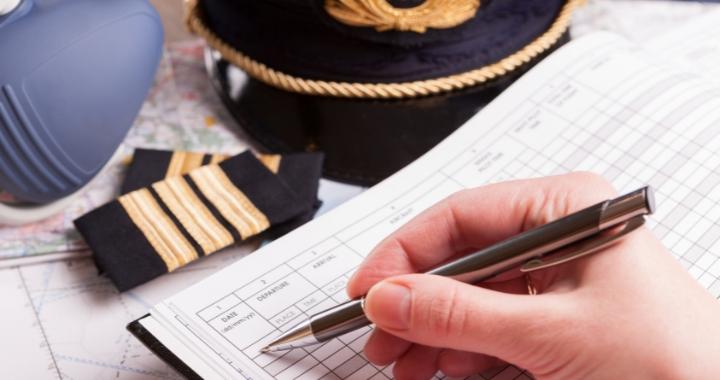Every pilot knows the importance of a well-prepared flight plan. It is the blueprint for a safe and efficient journey from takeoff to landing. While there are several formats of flight plans available, the International Flight Plan format is the most widely recognized and utilized around the world.
Having an accurate international flight plan is a critical component of aviation safety. It helps to ensure that all variables are taken into consideration before take-off so that risks are minimized. The plan is a detailed document that covers every aspect of the flight and helps the pilot and the crew stay on course. Its use in promoting air safety further legitimizes the importance of safety management systems in aviation.
When flying internationally, the importance of a flight plan becomes even more critical. Failing to have the correct information or format can lead to delays, misunderstandings with air traffic controllers, and, in some cases, even fines. It is therefore crucial to understand how to create and submit the right international flight plan for your journey. This is why we will be sharing and discussing the international flight format to help you avoid any confusion.

International Flight Plan Format
The International Civil Aviation Organization (ICAO) is responsible for standardizing the International Flight Plan format for all flights worldwide. There are two main types of ICAO flight plan formats – ICAO Flight Plan and ICAO Flight Plan-Related Messages. Here, we will focus on the former.
The ICAO Flight Plan is a comprehensive form that pilots complete before every international flight. It contains vital information pertaining to the flight, including the type of aircraft, number of aircraft, type of flight, cruising speed, and destination. In addition, pilots must indicate the performance-based navigation equipment on board like the use of VOR and ILS navigation systems.
One of the main differences between the international flight plan format and the FAA format is the additional information that is required by ICAO. This includes information such as the type of flight (scheduled, non-scheduled, or general aviation), the number of passengers on board, the type of aircraft, and the flight rules (instrument flight rules or visual flight rules).
The flight plan format also requires pilots to provide the estimated time en route, fuel endurance, and any necessary survival equipment needed in the case of an emergency. The type of aircraft is also specified, with a maximum certificated weight of either light, medium, or heavy. Additionally, the wake turbulence category of the aircraft is specified to ensure the safe spacing of aircraft during takeoff and landing.
Before departure, it is essential to file the flight plan with the appropriate authorities. The flight plan form must be completed in hours and minutes for accuracy and timely routing of the flight. The total estimated elapsed time is then indicated and preceded by the type of flight, such as VFR, IFR, or YFR.

How To File An International Flight Plan
Step 1: Determine the required documents.
Before planning an international trip, it is essential to ensure that all the necessary documents are in place. This includes having a valid passport, applicable visas, and health documents. Each country has its own requirements, so it is important to check the latest regulations before departure. Without the required document, entry will not be allowed.
Step 2: Check the airspace and airport restrictions.
It is crucial to understand the airspace and airport restrictions that apply to the destination country. A good source of this information is the AIP or the NOTAMs of the respective country. The AIP provides detailed information on the airspace and airport restrictions of each country, while the NOTAMs provide current and timely information relevant to flight safety and efficiency. It is important to check these documents when planning an international flight.
Step 3: Determine the route of the flight.
The route of the flight should be planned, which considers the airspace and airport restrictions, weather conditions, terrain, and other factors that may affect the flight. This information can be obtained from the weather forecast, topographic charts, and other available resources. It is important to plan the route to avoid restricted airspace, high terrain, and other factors that may affect the safety of the flight.
Step 4: Obtain clearance and permits.
Clearance from air traffic control (ATC) and permits from the authorities of the destination country should be obtained before planning an international flight. Clearance from ATC is required for every flight, and permits are required to enter certain countries. It is recommended that these are obtained well in advance of the planned departure to avoid delays.
Step 5: File the flight plan.
The last step in filing an international flight plan is to submit it to the relevant authorities. The flight plan typically includes information such as aircraft identification, departure and destination aerodromes, route of flight, and expected time of arrival. It is important to ensure all necessary details are included in the flight plan and to submit it to the relevant authorities well in time.
Here are some important tips to help in filing an international flight plan properly:
- Start planning well ahead of the journey date.
- Check the regulations and restrictions of the destination country and its airspace.
- Check the weather forecast and topographic charts.
- Obtain clearance and permits well in advance of the planned departure.
- Consider the aircraft equipment requirements for International Operations.
- Familiarize yourself with the operationally significant changes for Air Navigation.
Curious about what to mention when filing an International Flight Plan? Here are some of the important pieces of information to include in your international flight plan:
- Aircraft identification.
- Pilot details.
- Departure and destination aerodromes.
- Estimated time of departure (ETD) and estimated time of arrival (ETA).
- Route of flight.
- Altitude you plan to fly at.
- Aircraft type and registration.
- Persons on board.
- Alternate aerodromes.
- Fuel information.
- Communication facilities.
- Emergency and survival equipment are available on board.

Creating and adhering to a flight plan is crucial for aviation safety.
Filing an international flight plan requires careful planning, attention to detail, and an understanding of the regulations and restrictions that apply to the destination country. It is important to start planning well in advance, obtain clearance and permits, and ensure all necessary information is included in the flight plan. By following these steps and tips, pilots can file a successful international flight plan and ensure a safe and efficient journey.
While you are filling out your flight plan for your personal or chartered jets, ensure you get yourself a JetBed for your travels. The Jetbed is light, easy to store and use, but most importantly they are exceedingly comfortable. It is sure to make every minute spent in the air feel like you’re right at home.
For more information on aviation protocols, safety operations, aviation trends, and so on, kindly check our blog.

